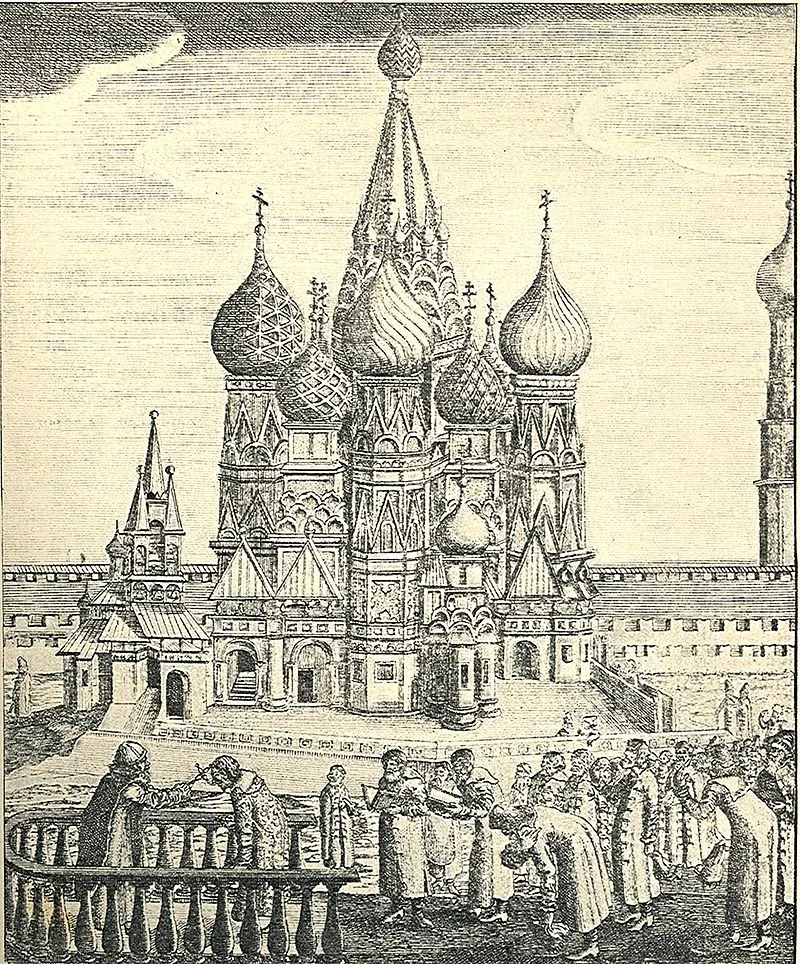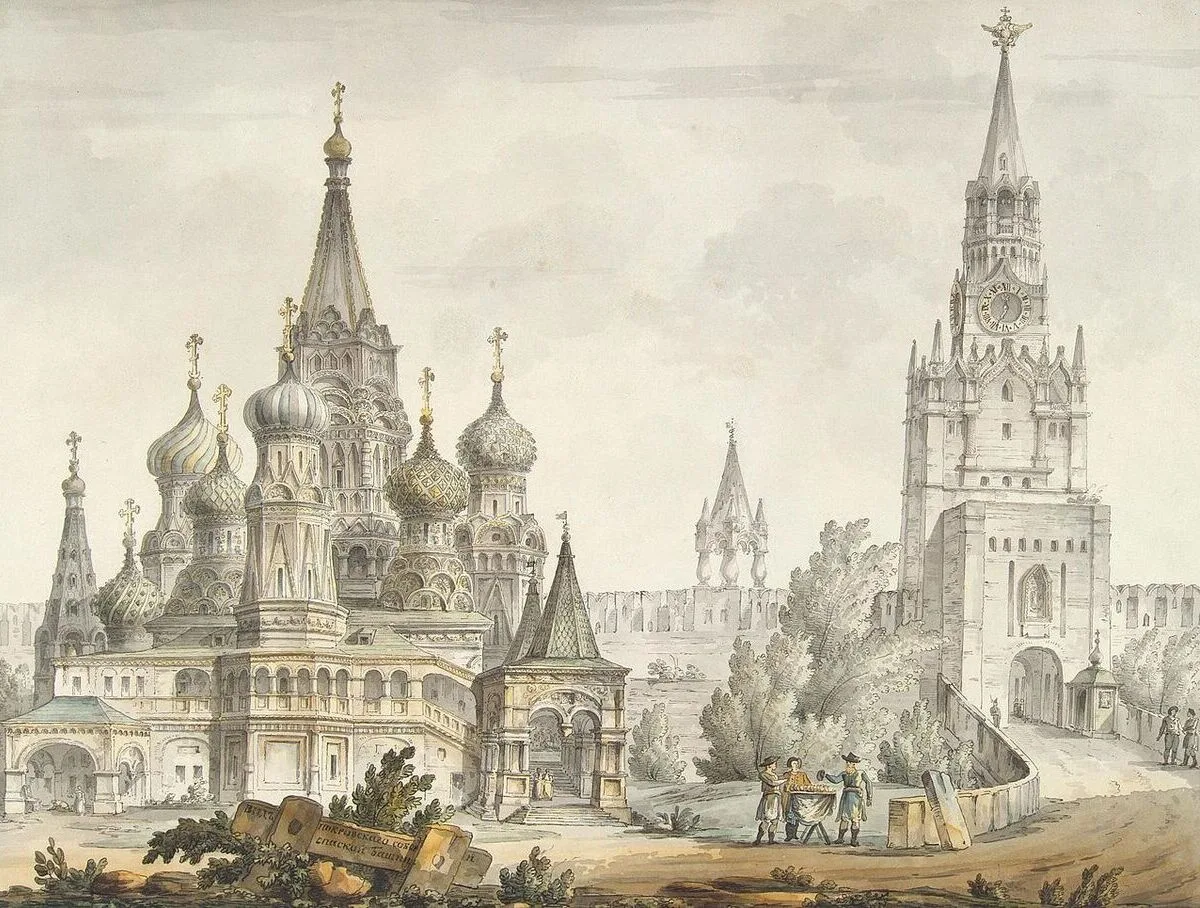There is a widespread legend that the architects Barma and Postnik, who built one of the most famous cathedrals in Russia, were deprived of their sight after their work so that they would not repeat their masterpiece. We decided to find out if this is so.
The story of the blinding of architects is often found on the Internet - in social networks, on tourist websites, on the website of the magazine "Poster" However, it is emphasized everywhere that this is one of many legends surrounding St. Basil's Cathedral. There are references to this episode in fiction. The most famous is the poem “Architects"(1938) by the Soviet poet Dmitry Kedrin, where there are the following lines: “And then the sovereign ordered these architects to be blinded, so that in his land there would be only one church like this.”
In the 20th century, a historical tradition was established according to which Barma and Postnik are considered the builders of the Cathedral of the Intercession of the Most Holy Theotokos on the Moat (as St. Basil's Cathedral is officially called). Their names are mentioned in several sources. First of all, this is one of the lists "Life of Metropolitan Jonah"(XVI-XVII centuries), where Barma and Fastnik are spoken of in the part dedicated to the transfer of the metropolitan’s relics to the Intercession Cathedral. Other sources - "Piskarevsky chronicler", preserved in a list from the early 17th century, and "The Legend of the Holy Wonderworking Icon of St. Nicholas the Wonderworker"(list of the late 17th - early 18th centuries).
Inconsistencies in these sources and the lack of biographical details about the architects have led to controversy among historians. IN "The Legend of the Holy Wonderworking Icon of St. Nicholas the Wonderworker“,” the latest and most detailed document listed, describes how Ivan the Terrible decided to build a church “near the Frolov Gate above the moat,” that is, where St. Basil’s Cathedral now stands. Then the text says: “And then God gave him two Russian masters, according to the admonition of Postnik and Barm, and there was wisdom and convenience in such a wonderful matter.” Word "advertising"can be interpreted both as a name and as a nickname. In this case, we are obviously talking about nicknames, since such names are not indicated in the calendar.
Another source, "Piskarevsky chronicler", gives only one name. Under the year 7068 (according to modern chronology this is 1559-1560) there is the following entry: “In the same year, by the command of the Tsar and Sovereign and Grand Duke Ivan, a votive church was conceived, which was promised in the capture of Kazan: the Trinity and the Intercession and the Seven Limits, which is called “on the Moat.” And the master was Barma and his comrades.” That is, only Barma is mentioned here, which allowed researchers assumethat there was only one chief architect and perhaps his name was Postnik Barma.
None of the documents cited contains a word about the further fate of the cathedral builders. The only source that mentions the blinding of the architect is “Travel to Muscovy and Persia" Holstein diplomat Adam Olearius. This book was published in 1647, and the visit to Moscow described by the traveler took place in 1636. Olearius writes: “Outside the Kremlin, in the part of Kitay-Gorod, on the right side of the large Kremlin gate, there is a skillfully built Church of the Holy Trinity, the builder of which, upon completion, was blinded, by order of the tyrant, so that he could no longer make another one like it.” Adam Olearius does not give the name of the architect (in his presentation there was only one architect), and he does not talk about the source of his knowledge.

One might assume that the episode with the blinding of the architects was not mentioned in Russian sources on purpose, so as not to denigrate Ivan the Terrible. But then it’s worth returning to “Piskarevsky Chronicler,” where there is not a word about this. This chronicle was based on more ancient sources, but was compiled under the Shuiskys, at the beginning of the 17th century. The Shuiskys are mentioned exclusively in a complimentary manner in this text. But the main feature of “Piskarevsky Chronicler” is the maximum detailed description oprichnina and state terror under Ivan the Terrible, including executions and torture. Therefore, it is quite possible to conclude that the episode of the blinding of the cathedral builders would most likely have been mentioned if it had actually happened and was known.
Opponents of the blinding version have another argument. In December 1555, when construction of the cathedral had already begun, Ivan the Terrible ordered send architects to Kazan to build a stone fortress, that is, the Kazan Kremlin. Several names are listed, including “church and city master Posnik (in the text so. - Ed.) Yakovlev.” Moreover, a little further in the text, Postnik is given the broadest powers - to choose materials at his own discretion and report on the progress of construction to the tsar.
It is not possible to establish reliably that we are talking about the same Faster. But if this is really the case, then the architect was building not only the cathedral, but also other buildings at the same time - and blinding him so that he could not repeat his masterpiece would be absurd.
Thus, the story of the blinding of the creators of St. Basil's Cathedral is found in only one source, and quite late - 75 years after the start of construction of the cathedral. There is no such episode in Russian chronicles and hagiographic works, including in the chronicles that tell in detail about the terror during the reign of Ivan the Terrible.
Cover photo: Giacomo Quarenghi. "Pokrovsky Cathedral and the Kremlin's Spasskaya Tower", 1797. Source: Wikimedia Commons / State Hermitage Museum
- Is it true that Ivan the Terrible killed his son?
- Is it true that the Larousse encyclopedia says that Ivan the Terrible was nicknamed Vasilyevich for his cruelty?
If you find a spelling or grammatical error, please let us know by highlighting the error text and clicking Ctrl+Enter.






